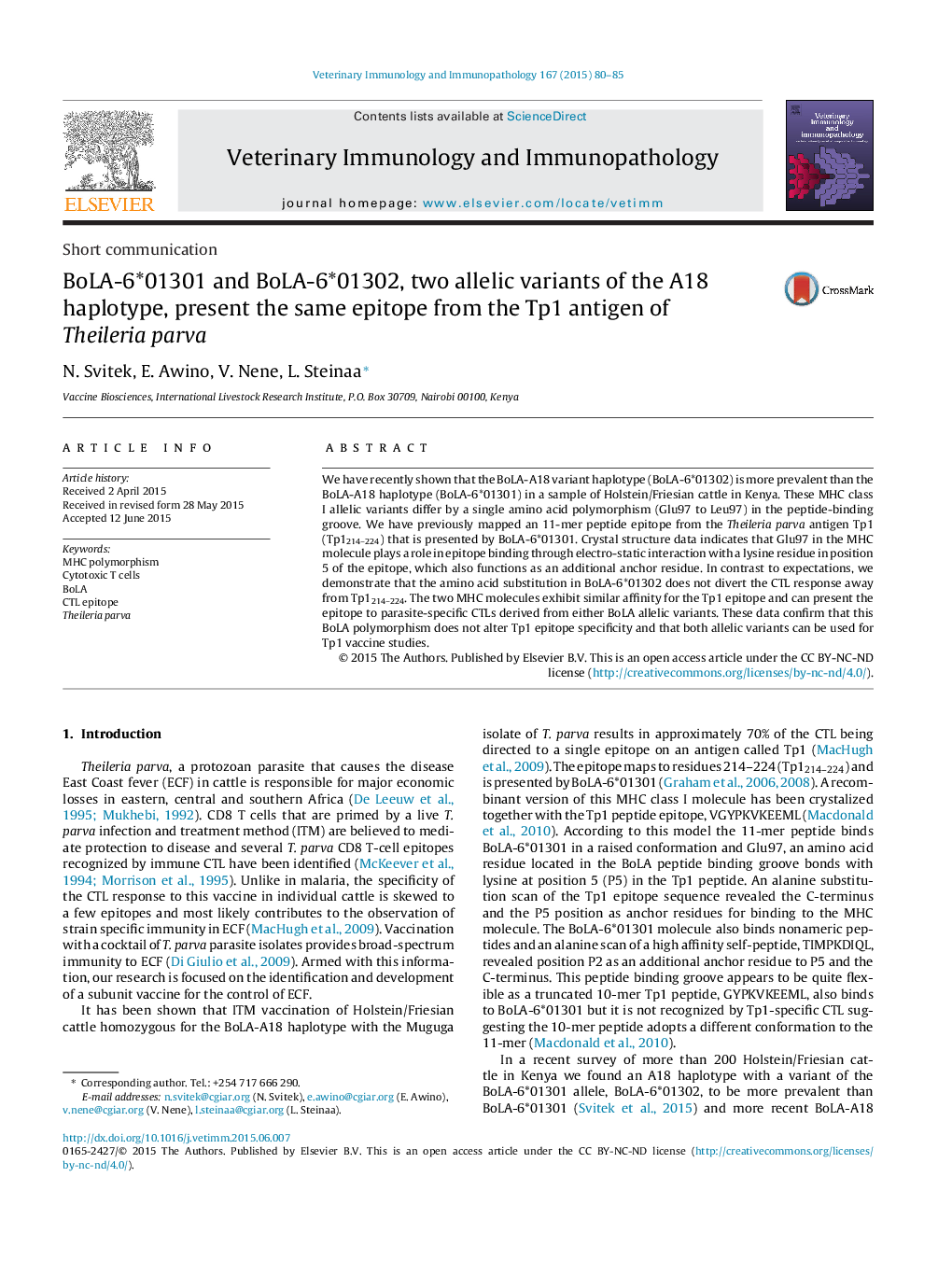| Article ID | Journal | Published Year | Pages | File Type |
|---|---|---|---|---|
| 5796650 | Veterinary Immunology and Immunopathology | 2015 | 6 Pages |
We have recently shown that the BoLA-A18 variant haplotype (BoLA-6*01302) is more prevalent than the BoLA-A18 haplotype (BoLA-6*01301) in a sample of Holstein/Friesian cattle in Kenya. These MHC class I allelic variants differ by a single amino acid polymorphism (Glu97 to Leu97) in the peptide-binding groove. We have previously mapped an 11-mer peptide epitope from the Theileria parva antigen Tp1 (Tp1214-224) that is presented by BoLA-6*01301. Crystal structure data indicates that Glu97 in the MHC molecule plays a role in epitope binding through electro-static interaction with a lysine residue in position 5 of the epitope, which also functions as an additional anchor residue. In contrast to expectations, we demonstrate that the amino acid substitution in BoLA-6*01302 does not divert the CTL response away from Tp1214-224. The two MHC molecules exhibit similar affinity for the Tp1 epitope and can present the epitope to parasite-specific CTLs derived from either BoLA allelic variants. These data confirm that this BoLA polymorphism does not alter Tp1 epitope specificity and that both allelic variants can be used for Tp1 vaccine studies.
